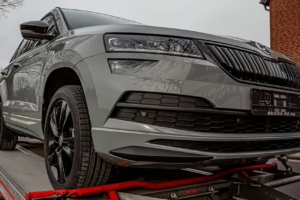From Showroom to Street: The VW Golf 2’s Journey Through the Years
The Volkswagen Golf has long been a mainstay in the automotive landscape, serving as a benchmark for compact cars around the world. Among its lineage, the VW Golf 2, produced from 1983 to 1992, stands out as a pivotal model that transformed the way we perceive hatchbacks. Looking back at the Golf 2’s journey, we can explore its evolution, cultural impact, and the legacy it leaves behind.
The Introduction of the Golf 2
Launched in 1983 as the successor to the original Golf (or Rabbit, as it was known in North America), the Golf 2 retained the charm and practicality that made its predecessor a hit. It sported a more rounded and refined design, offering a larger cabin space and improved comfort without sacrificing its compact nature. Available in various trims and with multiple engine options, the Golf 2 catered to a broad audience, from the everyday commuter to the performance enthusiast.
Volkswagen’s decision to upscale the Golf’s dimensions allowed for enhanced passenger space and cargo capacity, which attracted families and young professionals alike. Among the initial offerings were gasoline engines ranging from 1.1 to 1.8 liters, as well as diesel options that showcased the brand’s commitment to economy and efficiency.
Performance and Variants
One of the most exciting aspects of the Golf 2 was the variety of models available, from the economy-focused base model to the sportier GTI variant. The Golf GTI 16V, introduced in 1986, brought performance to the forefront. Equipped with a more powerful 1.8-liter engine producing 139 horsepower, it became a benchmark for hot hatches, blending practicality with an exhilarating driving experience.
This icon not only set the standard for future generations of GTI models but also carved out a unique niche in the automotive world, inspiring enthusiasts to embrace the compact performance segment.
Technological Advancements
As the automotive industry evolved through the 1980s and early ’90s, so did the Golf 2. This model saw the integration of more advanced technology, including improved suspension systems, enhanced safety features, and a focus on fuel efficiency. The introduction of fuel-injected engines and, later, catalytic converters highlighted Volkswagen’s aim to meet stricter emissions standards without significantly hampering performance.
The Golf 2 also benefitted from the adoption of new manufacturing techniques, including more sophisticated assembly lines that ensured better build quality. The result was a compact car that was not only fun to drive but also durable and reliable.
Cultural Impact
The Golf 2’s influence extended far beyond the showroom. It became a symbol of the burgeoning automotive subcultures of the late 1980s and early 1990s. In Europe, it was embraced by younger drivers looking for an affordable yet stylish means of transport. In North America, it captured the hearts of those seeking an alternative to larger vehicles, offering functionality without compromise.
The Golf 2’s design allowed for a wealth of customization, with various aftermarket modifications available, spawning a dedicated community of enthusiasts who celebrated the model through car shows and meet-ups. From lowered suspensions to custom paint jobs, the Golf 2 became a canvas for personal expression and creativity.
The Legacy of Golf 2
As production ended in 1992, the Golf 2 had left an indelible mark on the automotive industry and the hearts of its drivers. Approximately 6.3 million units were produced, making it one of the best-selling models of its time. Its combination of practicality, performance, and style set standards that subsequent generations would strive to meet.
Today, the Golf 2 enjoys cult status among collectors and enthusiasts. Classic car shows often feature well-preserved or modified versions, with many owners taking pride in restoring these iconic vehicles to their former glory. The model’s ability to remain relevant well beyond its production life speaks volumes about its design and engineering.
Conclusion
The VW Golf 2 represents a pivotal moment in automotive history, reflecting a shift toward compact, user-friendly vehicles that cater to diverse lifestyles. Its journey from showroom to street is marked by a blend of practicality and excitement, paving the way for future innovations within Volkswagen’s lineup. As we look towards the next chapters in the Golf’s legacy, we are reminded of the Golf 2’s enduring impact—one that continues to inspire generations of car enthusiasts around the world. [modern_footnote_source_link]


























Add Comment